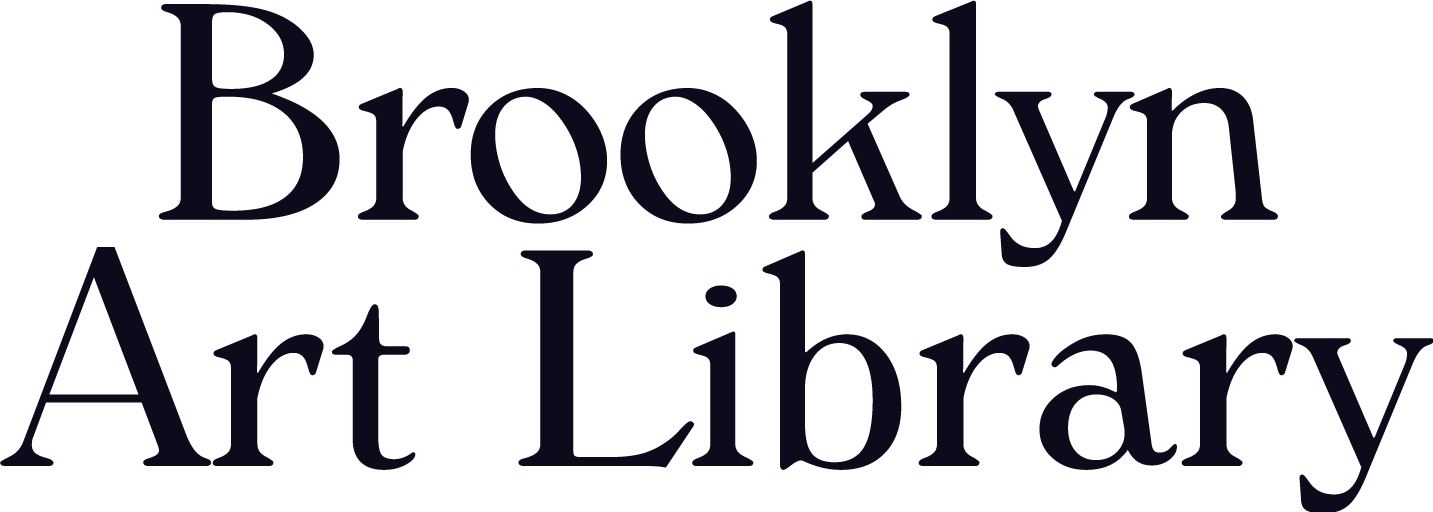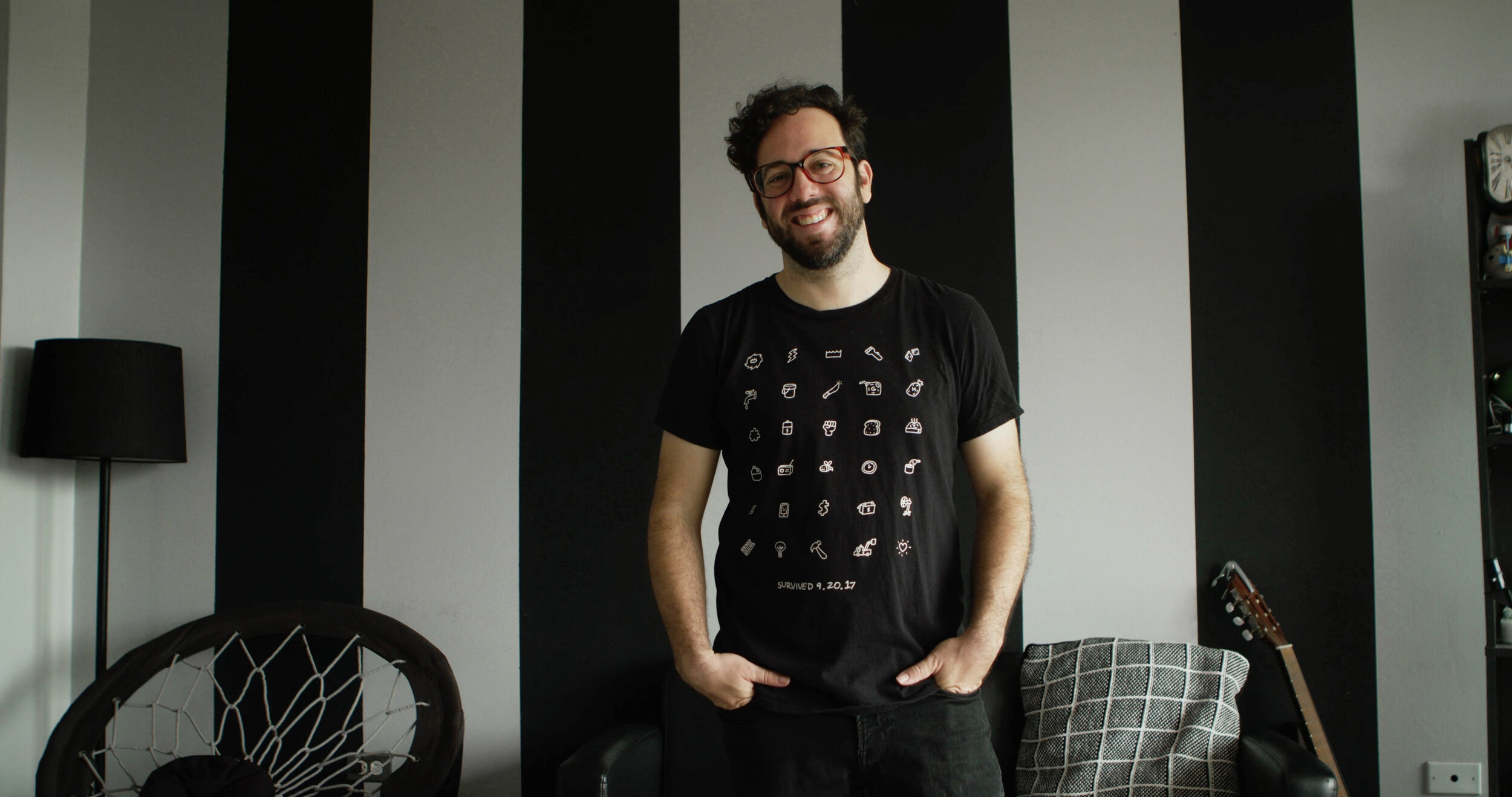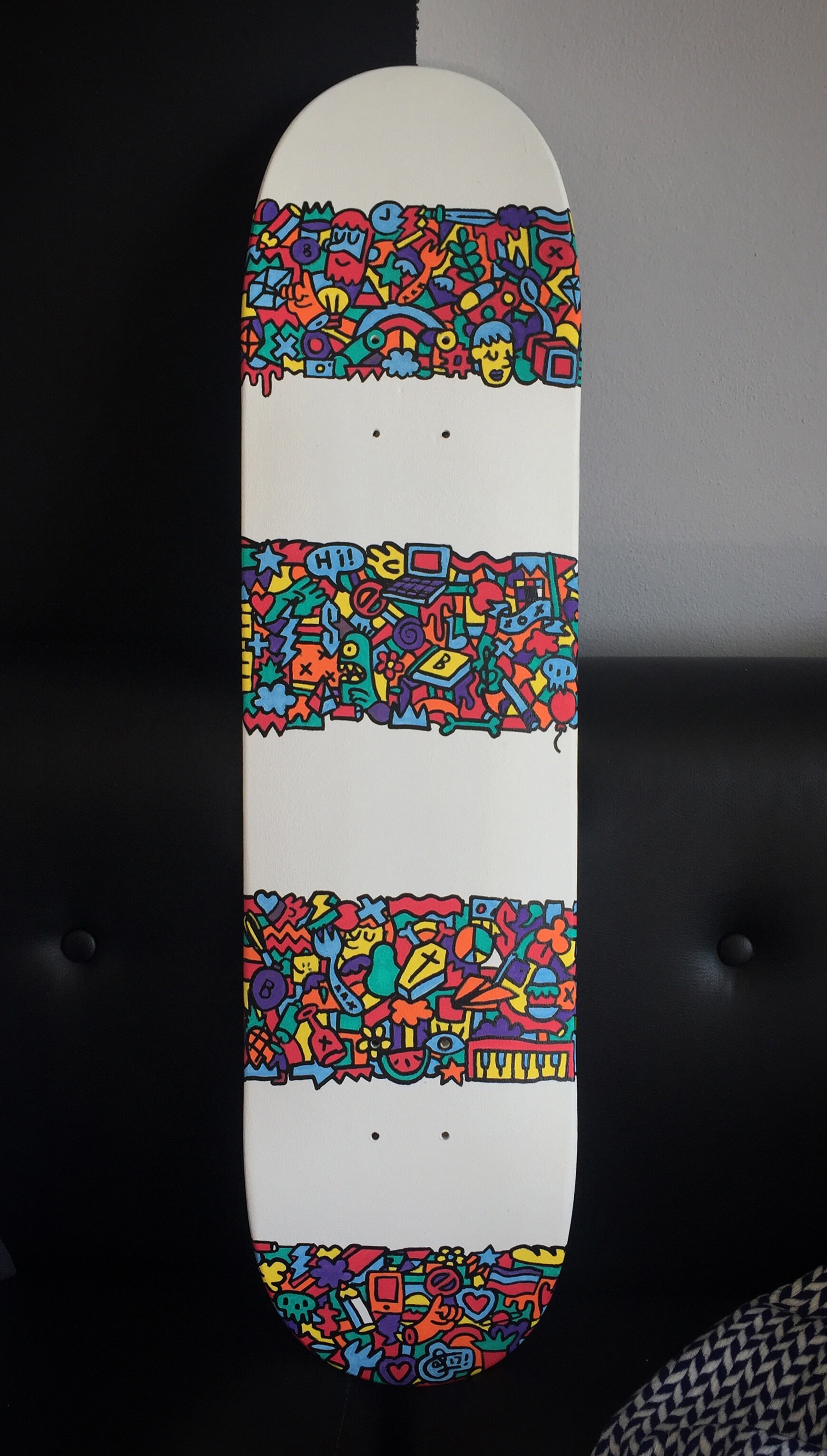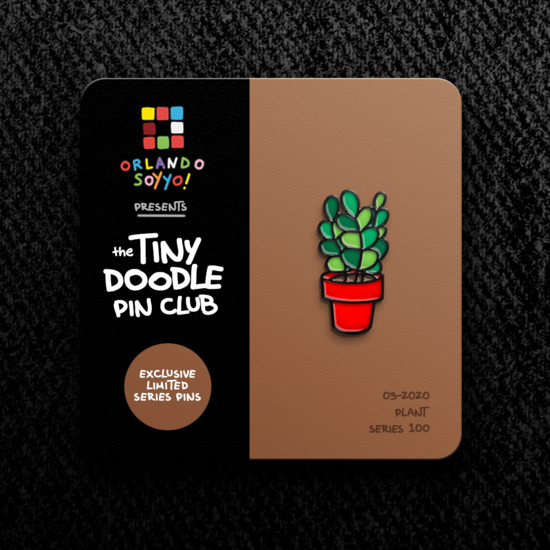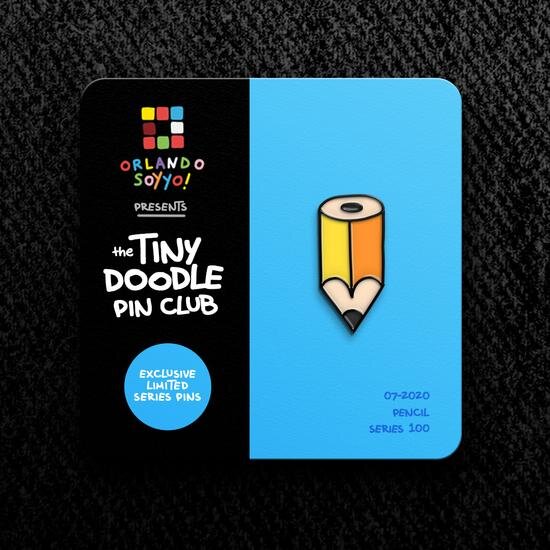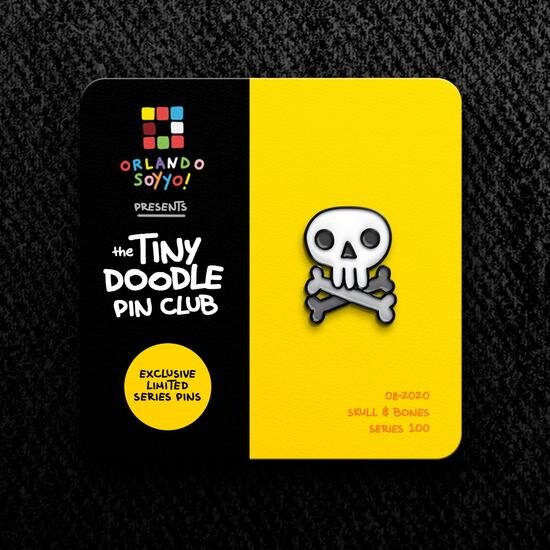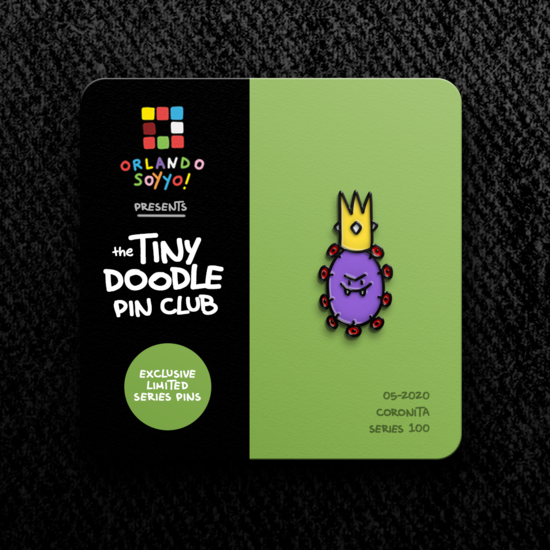Small Talks: Orlando Santiago
Orlando Santiago, also known as Orlando Soy Yo!, is an illustrator based in Puerto Rico. With a playful cartoon style, Orlando’s doodles have appeared on murals across the island, tiny pins, playing cards, paintings, t-shirts, and more! His eye for design has lead to partnerships with El Tap and Wynwood Brewing, animations for the children’s band Atención Atención, and he’s helped create new visual branding for numerous local businesses and organizations across Puerto Rico. We can’t get enough of his vibrant illustrations, and his ongoing experiments with new mediums and formats for his work should be an inspiration for artists and designers everywhere. You can check out more of Orlando’s work on his website and keep up with his latest projects through Instagram.
On Wednesday, March 24 EST, Orlando will lead a class on creativity as part of our March workshop series.
Your 2012 sketchbook, “Forks & Spoons,” is a whimsical medley of different kinds of kitchen utensils, each in their own particular illustration style. What was it like creating each sketchbook spread?
Well in the case of that particular sketchbook I was very excited about approaching the theme from all possible angles art-wise. So I challenged myself to do something different in every spread. Some were in a more realistic style, some in a more doodle style, some comics, typographic, colored pencils, and I even did one with a vinyl cut sticker that I designed digitally. I have a lot of art books at home that are collections of work by different artists and I wanted to make something like that, surprising you with each page. Also, I love these creative exercises where you have to think of 10 different ways of making the same thing. I always feel the last few pages are always stretching my creative abilities and may even be a little painful or frustrating but overall it's a fun result.
How have you noticed your own art style change since you first made this sketchbook almost a decade ago?
Yeah, I feel my line-work has changed a lot. It's inevitable that you look at your own things from years before and see how you've improved or changed here and there. I feel my line-work is a little more streamlined and I was a lot less repetitive when filling pages with doodles.
Over the years in the process of finding ways to better my artwork I've created a lot of rules so when I look at my past work I see the absence of these rules that I later created and then I start to questions if these rules really made my artwork better or worst. Rules like when making a doodle filled page not having two characters too close to each other, or making all doodles roughly the same size or proportion, or having two things that are the same color next to each other things like that.
When revisiting this old sketchbook I saw a couple of pages that feel a lot more creative than newer pages that I'm making now. Maybe I had more fun back them and over time all these rules made the drawing game a little less fun and a lot more business. It's something to consider.
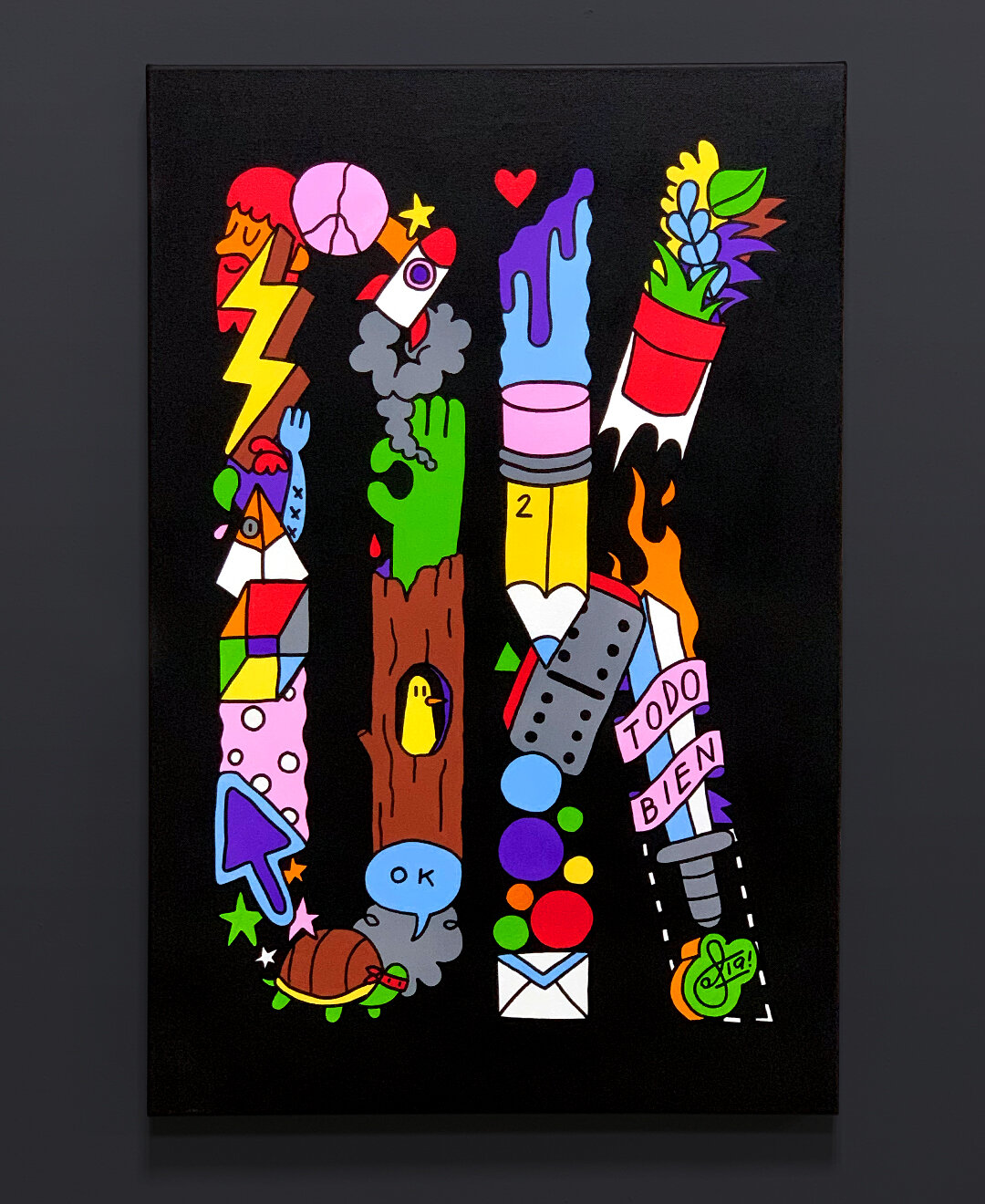
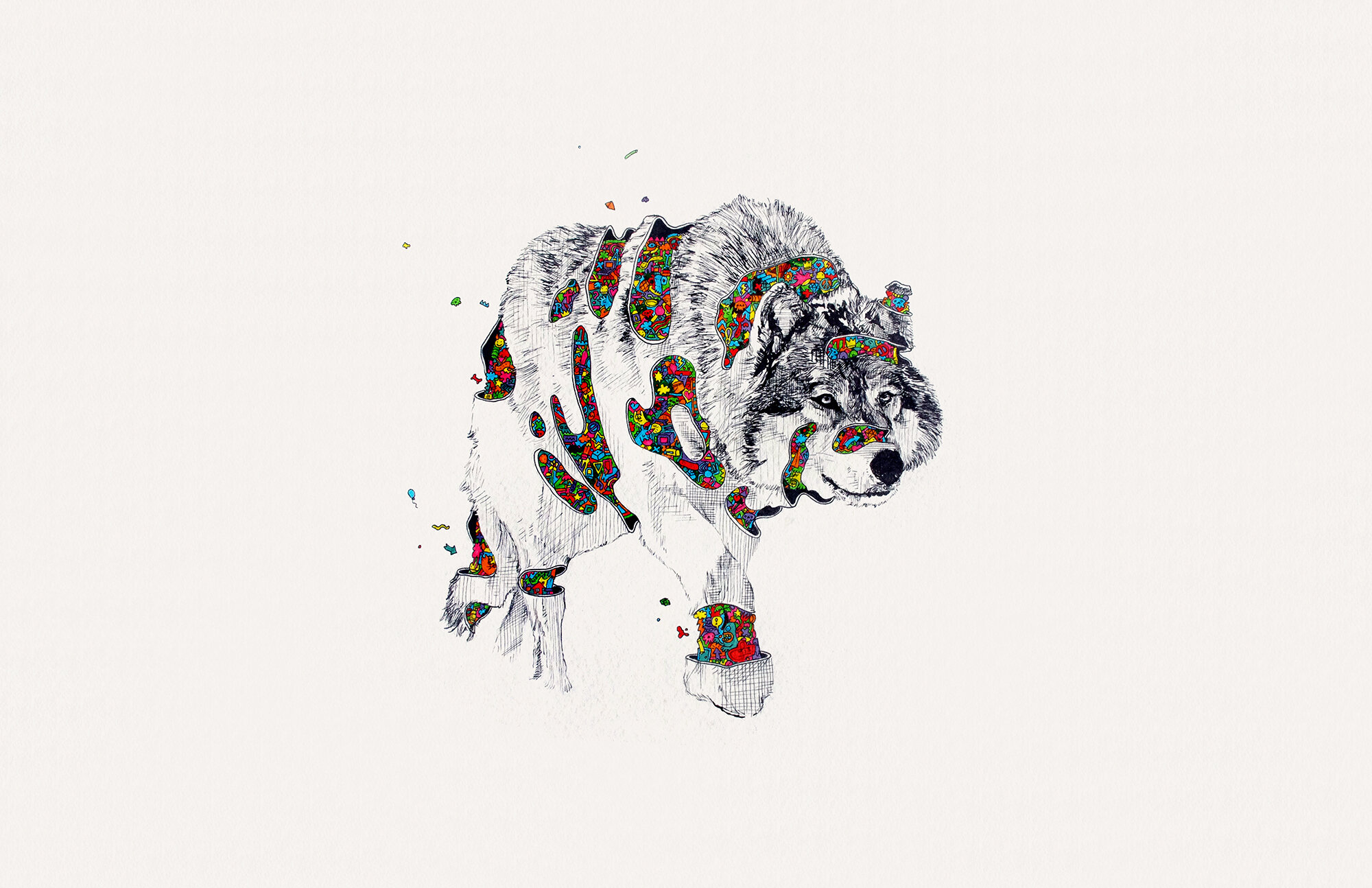
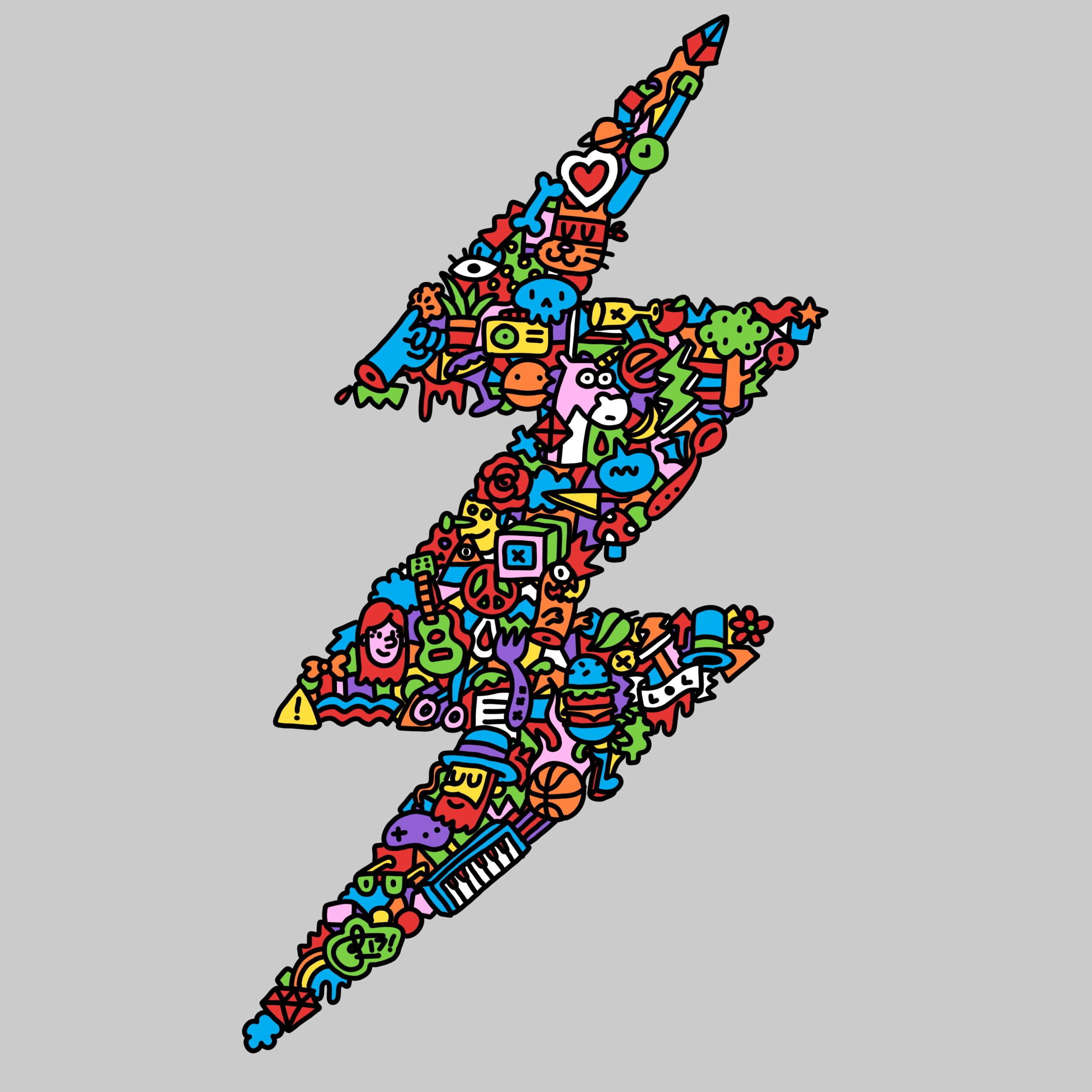
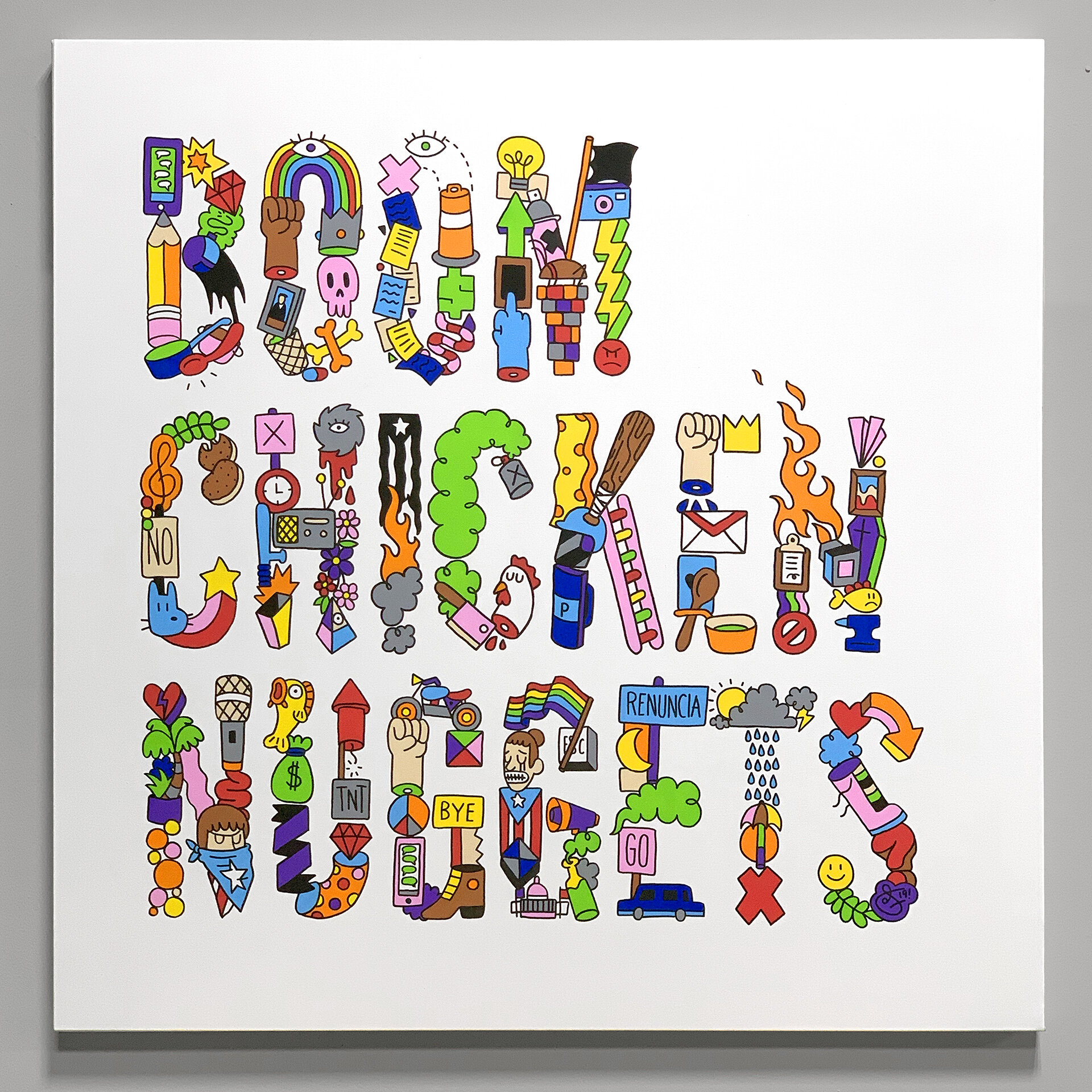
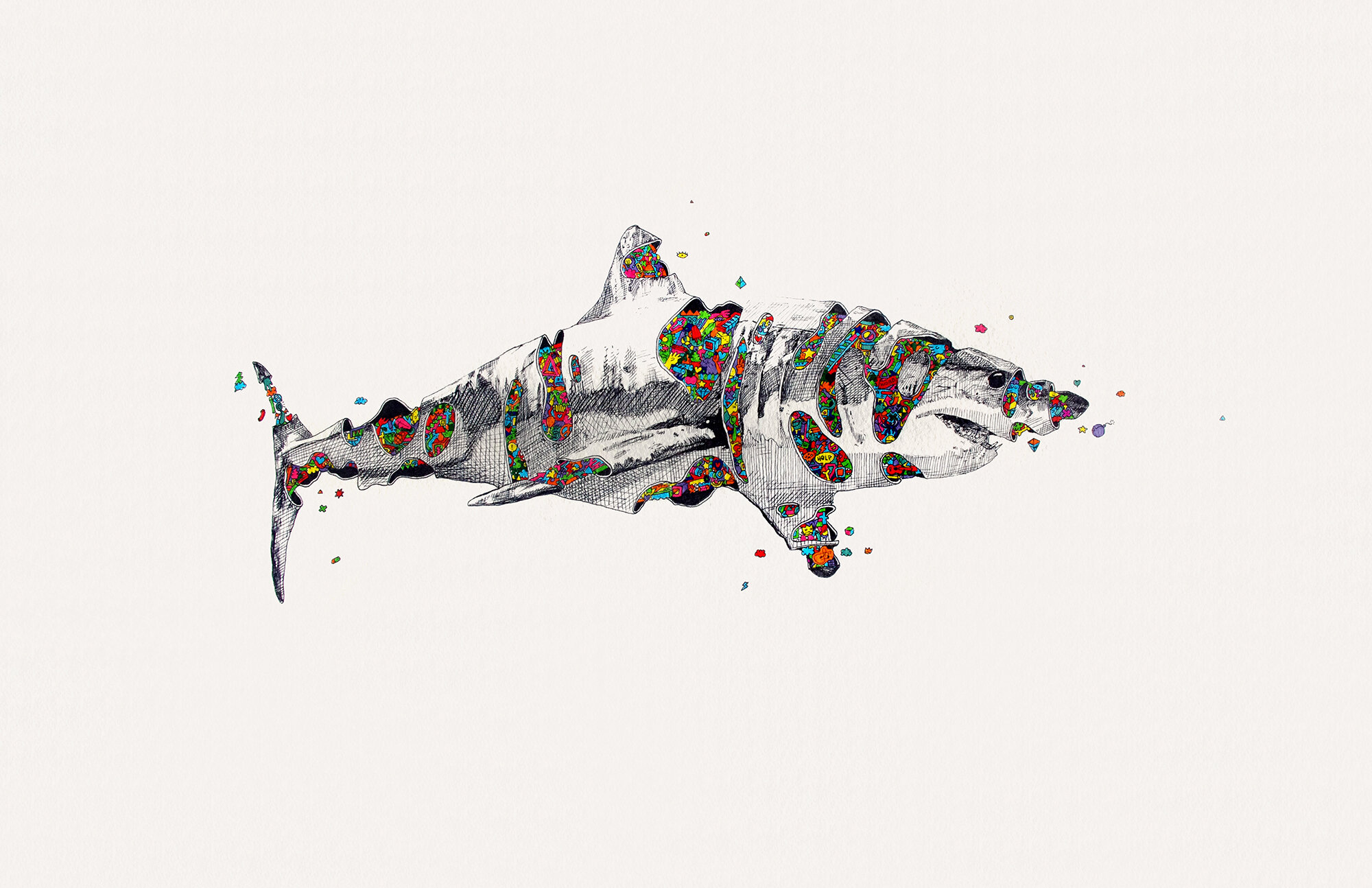

You’ve worked on a variety of design projects, creating graphics and branding for small businesses, events, and more. What is your process like for working on these commercial and client-focused projects?
I don't post much about my design work on instagram because my Instagram page is more an extension of myself. My design work is always based on whoever I'm designing for. I love to work with small businesses because they make for easier clients and I feel the impact of a really good design for them is almost larger than making a good design for an already-large brand.
In terms of my process, I think it's very different from my personal artwork. When I'm making personal art I'm thinking about how to make something that I can enjoy creating or that speaks of something I want to say. When I'm making something more commercial or client focused I'm thinking about the client's problem and how this design can fix or target that problem. Whether it be recognition, or communicating a new strange concept to somebody who doesn't know anything about it, or making sure the design speaks to the people it's intended to speak to. Design can be a very powerful tool. I feel that understanding the power design can have makes the work feel a lot less like "work" and makes you enjoy the process and result so much more.
You have also built a very prolific career as an illustrator, and your creations have appeared on apparel, card decks, and more. When did you first begin making art?
I like that word, prolific. I had to Google it to make sure what it means and, yes, I guess I have had a very prolific career. Maybe it's because I'm always looking to see how I can make something new. In terms of making art, I think I've been making art all my life. I don't remember a time where I wasn't interested in drawing and I was very lucky my family encouraged it and supported me making art since I was very small.
Do you have any advice or recommendations for budding illustrators, or artists looking to branch out into more commercial branding and graphic design work?
My biggest advice is take care of your reputation like it's the most valuable thing. I don't know if this is a universal thing but, where I live, artists have a bad reputation of being irresponsible and careless. We are viewed as these magical untamable creatures that will always want to roam free and not be caged into things. I would argue that most people don't want to be caged into things, but that's beside the point. I think that discipline is very important and will help you so much not only with finding more work but also make you feel better about yourself and your life.
Most of my work comes from referrals and quite simply if you don't make a good job or don't deliver on time you don't get referred. Living in a small island like Puerto Rico where everyone you meet is somehow connected to you and it seems like everyone knows each other, you can't really take any chances with your reputation. So yeah, that's my advice: make to do lists, calendar your life, and find a way to have a structure around you that doesn't feel like a cage.
Do you keep a sketchbook for your daily practice? Do you find sketching helps you with your illustration and design projects?
Oh yes, I have lots of sketchbooks. I'm a very hard person to get a gift for, so most people just give me sketchbooks and art materials. Sketching is sometimes the only way to be creative because you can make your thoughts visible quickly and later evaluate if what you made makes any sense or works for whatever you are making. I feel a lot of people are intimidated by sketching and it's because it looks a lot like drawing. It's not the same thing. Sketching is supposed to be free from judgement and fun, so don't stress about it and don't call it drawing. It's not supposed to look good, or turn out like anything. It's simply just making your thoughts visible quickly before they disappear.
What are some art supplies that you can’t live without?
Well, if I'm being literal, I don't think there are any art materials I can't live without. You can make art with anything so food and shelter are more important to live. You can later make art with food scraps. That being said, I do have a art material hoarding problem so I have a lot of art materials I'm very fond of. Obviously pencils and paper are a must wherever I am, but I've grown very fond of Posca markers and digital instruments like the iPad Pro. I go back and forth between digital and analog so my desk will often have a mix of cables and pencils everywhere you look.
Could you speak about your Tiny Doodle Pin Club? How did this series come about? What’s next for this project and the community you’ve built through it?
The Tiny Doodle Pin Club is a project I started and ended last year. For a long time I wanted to create lapel pins but I couldn't settle on which design I wanted 100 (which was the minimum quantity) of. So I started a Patreon page and called it the Tiny Doodle Pin Club and that way I could cover manufacturing costs and make one pin every month. I had the goal of making 12 pins, and therefore making a year’s worth of pins, but on the 11th month I was struggling emotionally and decided to end the project just before the finish line. Maybe one day, I'll create the 12th and final pin and complete the series. For now, I have the 11 designs available on my website and my OCD is oddly at ease with the fact that there are 11 and not 12 of these. I did enjoy making this project because it was very slow and relaxed, the community was very cool and, even when the pins were delayed due to COVID, everyone was so cool. There were 2 months where I could not go to print the packaging because everything was closed so, after somebody from the community suggested it, I made them all by hand.
Along with working in digital-based and ink mediums, you also do quite a bit of painting, not only on wooden canvases but on murals for companies around Puerto Rico. What has it been like working on these larger-scale commissions? Do you want to work on more murals in the future?
Oh yeah, well I like to make thing .and very often curiosity will lead me to take on larger projects such as murals which were really fun to learn to make. I began documenting my journey into mural making through instagram stories which are basically all my IG Highlights. They are all in Spanish, but I'm glad I was able to document every step from having no idea how to make large scale artwork to this point where I'm still not sure if I'm doing it right but it works for me.
It's definitely something really different than what I'm used to doing. I'm more of a sedentary person and I'm sitting down most of the day, but on murals I get to stand up a lot and climb on ladders, and do a lot more physical activity that I'm used to. The first days are brutal but I do enjoy the fact that it's so different and that feeling of working on something literally larger than yourself. I am in the process of quoting (is that a word?) two or three murals at the moment and if I get the go ahead maybe my feet will be super sore soon.
Who are some artists that influenced your own creative development?
When I was in art school, I was very much influenced by all the students working around me. I remember I was very self conscious thinking that what I was doing was not really that good compared to everyone else. So I looked a lot at what other people were doing and learned different techniques from them. I studied in a relatively small college with about 400 students, therefore we were a very tight group who loved to share and help each other out. It's inevitable that we influenced each other and well obviously also mixing that with artists we admired and trying to do things like them.



Where do you find inspiration today?
I always say my art style is the result of my failure at attempting to make the art I like. I follow a lot of accounts on instagram but some of my favorites are: @jamesjeanart, @dabsmyla, @jean_jullien, @gemmacorrell, @gregkletsel, @posterlad, @mrseaves101, @lindseymadethis, and well many more that I'm sure I will think of as soon as I send this. Those are just the art accounts that I follow. I get very inspired by creative people from other disciplines. Especially stand-up comedians who look at things from very different points of view and I've recently been getting very into engineering and woodworking videos which deal a lot with problem solving and creative solutions.
How can people support your work?
I guess the easiest way and less expensive way is just following my instagram and sharing my things with your friends. If you want to go the extra mile you can go to my website and get yourself an art print or one of the art products that I have there like the Tiny Doodle Pin pins. I also created an UNO type card playing game which I will have to say is NOT UNO cards and is "1" cards for legal reasons. My instagram account is @orlandosoyyo which just means "I am Orlando" in Spanish.
